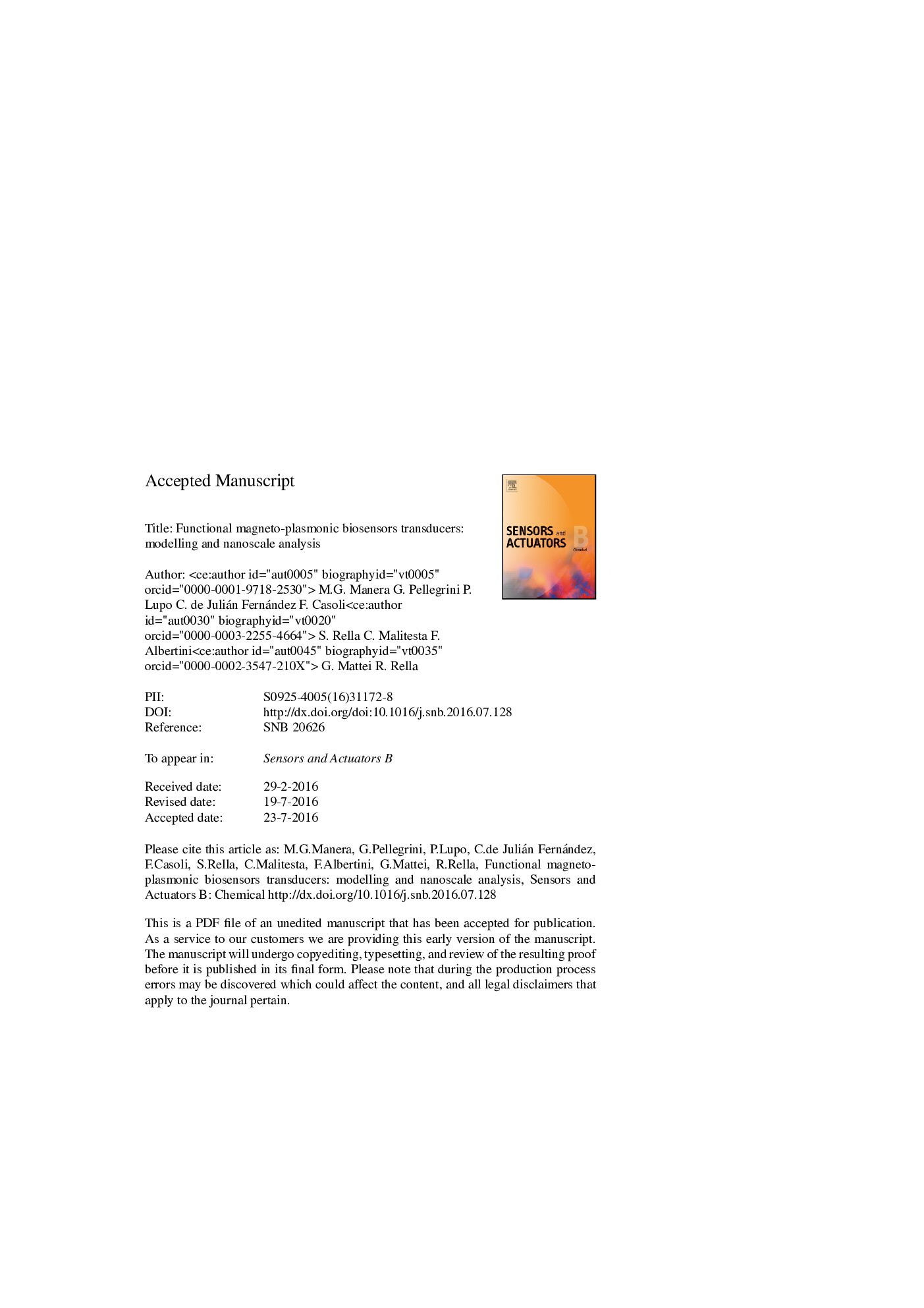| Article ID | Journal | Published Year | Pages | File Type |
|---|---|---|---|---|
| 7142214 | Sensors and Actuators B: Chemical | 2017 | 38 Pages |
Abstract
The work reports on theoretical and nanoscale characterization of Au/Co/Au multilayers used as transducers in Magneto-optical Surface Plasmon Resonance (MOSPR) biosensors. Different aspects related to the optimization of transducers are discussed. In particular, optimized sensitivity is demonstrated to depend on the full multilayer total thickness, on the Co layer thickness and its position within the film, as well as on the discrepancy between the optical constants in very thin layers with respect to bulk values. Co layer thickness and position in the trilayer are optimized to provide the best compromise between magneto-optic (MO) activity and optical losses as well as to ensure large electromagnetic (EM) fields at the Au-dielectric interface. In this sense surface sensitivity can be maximized with respect to variations in the bulk properties of the measuring fluid and ensure higher performances with respect to traditional SPR biosensors. In parallel, a comprehensive study on the structural, morphological, chemical, magnetic and optical properties of layers composing the realized magneto-plasmonic (MP) transducers is reported by comparing the results of experimental and theoretical investigations. High resolution TEM (HR-TEM) images provided a deep insight on the interfaces morphologies thus revealing a significant discrepancy between modelled and real samples basically due to sizable roughness at each metal interface. As highlighted by hysteresis loop measurements, this parameter results having a critical role in tailoring the magnetic and consequently magneto-plasmonic properties of the trilayer transducers. As a proof of concept, a simple immunoassay relative to the study of an antibody-antigen interaction in liquid phase has been investigated.
Related Topics
Physical Sciences and Engineering
Chemistry
Analytical Chemistry
Authors
M.G. Manera, G. Pellegrini, P. Lupo, Valentina Bello, C. de Julián Fernández, F. Casoli, S. Rella, C. Malitesta, F. Albertini, G. Mattei, R. Rella,
